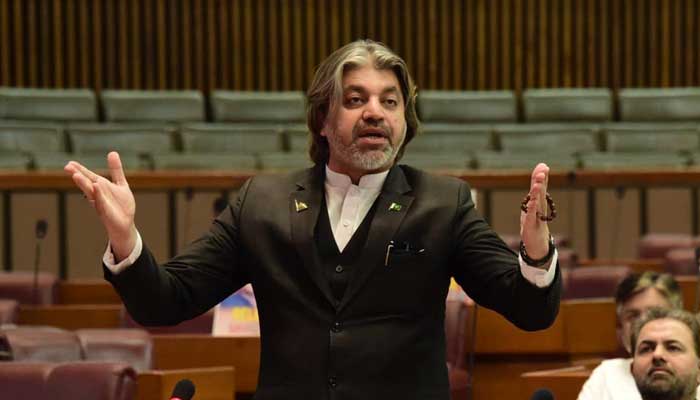Health
Agriculture: Bhal Safai — fixing water losses
字号+ Author:Smart News Source:US 2025-01-10 23:22:00 I want to comment(0)
Pakistan is grappling with as it seeks to expand cultivated areas and increase cropping intensity. These measures are imperative to ensure food security for a rapidly growing population and to produce an agricultural export surplus to reduce the country’s current account deficit. However, with no new reservoir expected in the short term to augment water storage capacity, the most viable solution lies in conserving water through efficient irrigation and minimising water losses in the irrigation system. The canal irrigation system can be broadly categorised into two parts based on operational control and maintenance and repair responsibilities. The first includes canals, branch canals, distributaries, and minors, which are fully managed by the provincial irrigation departments. The second consists of watercourses — approximately 58,000 in Punjab — where farmers, often through water-users associations (applicable for lined watercourses), are responsible for maintenance and repair tasks to improve water conveyance efficiency. Watercourse losses intensify as farmers reduce maintenance and desilting efforts amid evolving socio-cultural shifts Unfortunately, conveyance losses in water channels remain high, and therefore, a large portion of the Punjab Irrigation Department’s maintenance and repair budget (for irrigation works) is spent on desilting (Bhal Safai) of distributaries and minors. The activity is carried out annually, mostly during December and January. Unfortunately, the allocated budget has consistently proven inadequate to desilt all of them effectively. As a result, some distributaries and minors are either entirely overlooked for the following year or only partially desilted, leading to continued water losses and reduced water availability at the tail ends. Compounding the issue, the budgetary allocation for repairing and maintenance has been declining in real terms over the past few years due to high inflation. Alarmingly, even in absolute terms, the annual budget has decreased in the current year from Rs8.59 billion in FY24 to Rs7.46bn in FY25. This highlights that water conservation — a critical issue of global significance — is not a priority for the government despite increasing water scarcity and mounting food security challenges. On the other hand, watercourse losses are even greater. In 2001, these losses were estimated at 31 per cent of the water delivered at the watercourse head, amounting to 26 million acre-feet annually across Pakistan. That is why, over the past 23 years, a large number of watercourses were partially lined to reduce conveyance losses. However, all watercourses, whether lined or unlined, require frequent cleaning and maintenance (desilting, removing vegetation and debris, and compacting embankments) typically every one to two months. Nevertheless, despite farmers recognising water as a vital resource for farming, this task has become increasingly difficult in many villages due to evolving socio-cultural dynamics. Budgetary allocation for repairing and maintaining of canals, distributaries, and minors has been declining in real terms over the past few years due to high inflation, with the annual budget decreasing in the current year from Rs8.59bn in FY24 to Rs7.46bn in FY25 Historically, in Punjab, the development approaches based on mutual collaboration, like cooperatives, Farmer Field School (experiential learning technique in groups), and community organisations (developed by rural support programmes and other non-government organisations) have largely failed to achieve their intended outcomes. This failure stems from deep-rooted societal fragmentation based on caste, clan ( ), religion, ethnicity, sect, and most recently, political affiliation. Such an intensifying divide poses a serious obstacle to the effective management of shared resources like watercourses. Increasing the challenge further, farm sizes have shrunk over the last two decades due to the division of land among successive generations, driven by a population growth rate of over 2.55pc. Consequently, the number of shareholders (irrigators) per watercourse has surged, often exceeding 100, and further complicating collective efforts. In addition, the growing obsession with social media in rural areas — fueled by high teledensity of around 85pc and expanding internet coverage with presently 111m internet users — has further aggravated the situation. This shift has diminished traditional social interactions among smallholders, which was once a hallmark of our rural life. Such developments have made collective efforts for watercourse upkeep even more difficult. Across the world, the roles and responsibilities of individuals, families, governments, and the private sector have been shifting with changing socio-economic and cultural trends. Given the growing water scarcity and the transformation of rural areas, the government must enhance its oversight to ensure regular watercourse cleaning and maintenance, rather than relying entirely on farmers, as is currently the case. This can be achieved by exercising the provisions of two existing laws: the ‘On-Farm Water Management and Water Users’ Associations Ordinance 1981’ (under the Agriculture Department), and the ‘Punjab Irrigation, Drainage and Rivers Act 2023’ (Punjab Irrigation Department), while effectively utilising the existing field staff of these departments. However, going one step further, the government should introduce paternalistic laws — a widely recognised legal approach worldwide — to regulate the actions and choices of farmers. Through an amendment in the existing legal framework, the Irrigation Department can be empowered to hire service providers (contractors) for cleaning and maintenance of watercourses at regular intervals, in cases where farmers fail to fulfill this responsibility. In that case, the associated costs should be incorporated into the Abiana (water tax) levied on them. As water shortages intensify, manifested by protests from Sindh’s government, political parties, and civil society against the allocation of water to new canals, it is imperative to take every possible step to minimise water losses. With the annual canal closure approaching, there is a timely opportunity to launch a mega “Bhal Safai” campaign this year, engaging all stakeholders to maximise impact.
1.This site adheres to industry standards, and any reposted articles will clearly indicate the author and source;
 Related Articles
Related Articles-
'Cricket's integrity sacrificed' by India's demand for Champions Trophy
2025-01-10 23:19
-
Morgan Stanley decides to leave sector climate coalition
2025-01-10 21:58
-
World Bank to lend Pakistan $20bn over 10 years: sources
2025-01-10 21:40
-
Despite mixed sentiment at PSX, KSE-100 gains 467 points
2025-01-10 20:43
 User Reviews
User Reviews Recommended Reads
Recommended Reads Hot Information
Hot Information- Pak vs SA: Proteas take command after Green Shirts lose three wickets
- Despite mixed sentiment at PSX, KSE-100 gains 467 points
- Despite mixed sentiment at PSX, KSE-100 gains 467 points
- Despite mixed sentiment at PSX, KSE-100 gains 467 points
- پاکستان اور بھارت نے جوہری تنصیبات اور قیدیوں کی فہرستیں آپس میں تبادلہ کیں۔
- World Bank to lend Pakistan $20bn over 10 years: sources
- Despite mixed sentiment at PSX, KSE-100 gains 467 points
- Despite mixed sentiment at PSX, KSE-100 gains 467 points
- ICC unveils fixtures, groups for Champions Trophy 2025
 Abont US
Abont US
Follow our WhatasApp account to stay updated with the latest exciting content













